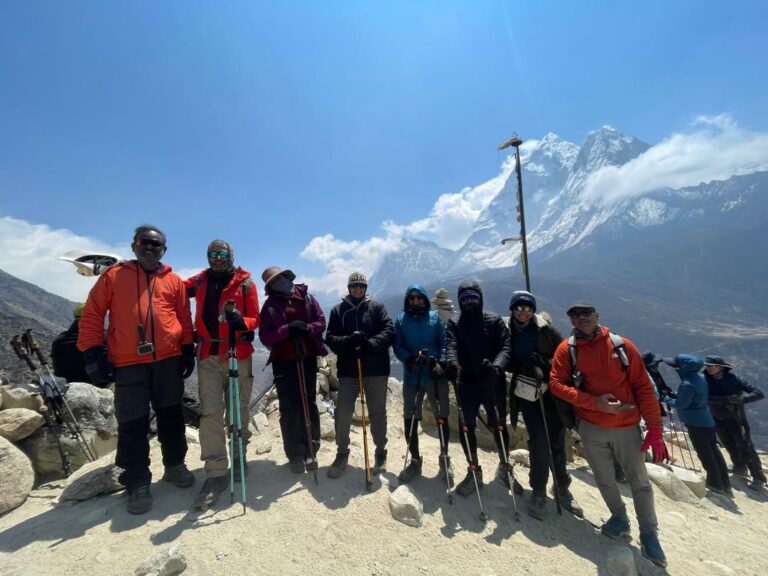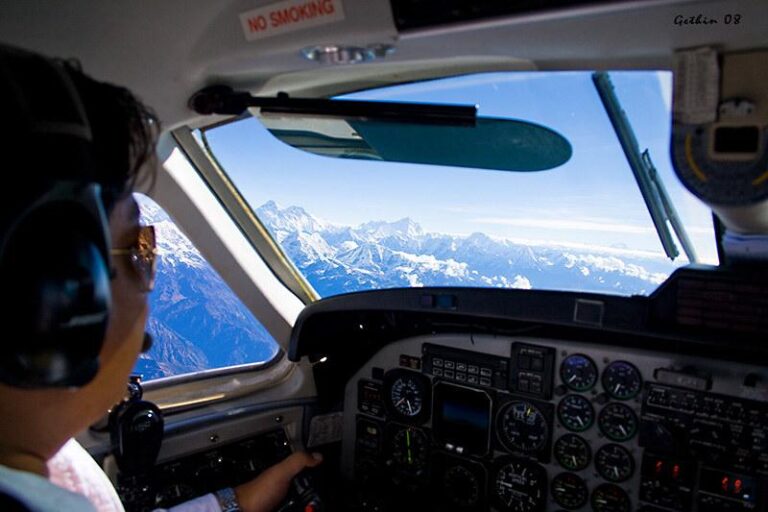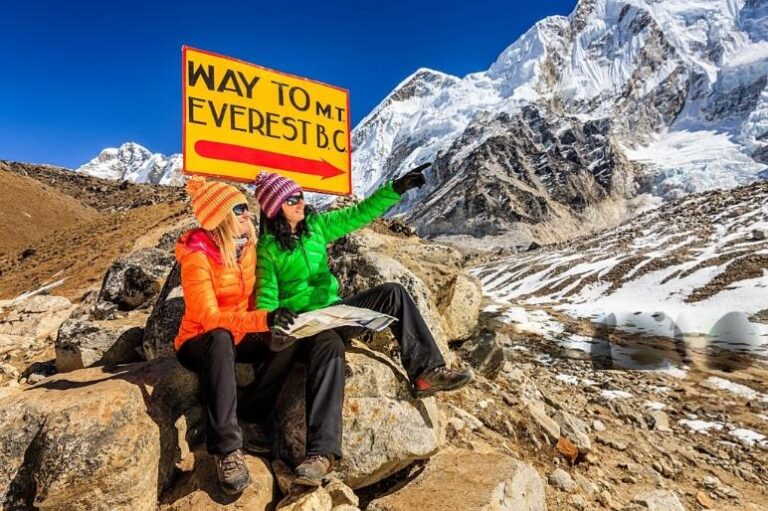
Train for Everest Base Camp Trek
The Everest Base Camp Trek is physically demanding. It is an adventure that requires thorough preparation. In this article on how to train for Everest Base Camp trek physically, we will understand the importance of physical training for this challenging trek and provide an overview of the journey itself.
Table of Contents
1. Preparing Your Body for the Everest Base Camp Trek Challenge
Physical preparation is very important for successfully completing the Everest Base Camp trek. By following a well-rounded training program that includes cardio and strength training, you can enhance your aerobic conditioning, improve your endurance, and increase your chances of acclimatizing to the high altitude.
Here are some key points to consider as you train for Everest Base Camp Trek:
1.1 Cardiovascular Endurance Training
Cardio exercises play a vital role in building cardiovascular endurance, which is essential as you train for Everest Base Camp Trek for your trekking at high altitudes. Some effective cardio exercises beneficial for high altitude trekking include:
- Running: A great way to improve your cardiovascular fitness while mimicking the demands of trekking.
- Cycling: Helps strengthen your leg muscles and improves overall endurance.
- Stair Climbing: This simulates the uphill sections of the trek and works your lower body muscles.
The recommended frequency and duration of cardio workouts as you train for Everest Base Camp Trek depend on your current fitness level and training goals. As a general guideline, aim for at least 2-3 cardio sessions per week, gradually increasing the duration and intensity over time.
To simulate the altitude conditions you will face during the Everest Base Camp trek, consider adding elevation training to your fitness program. This can be done by adjusting the incline on a treadmill or using a stair-climber machine. Elevation training helps prepare your body for reduced oxygen levels at higher altitudes, improving your overall endurance and reducing the risk of altitude sickness.
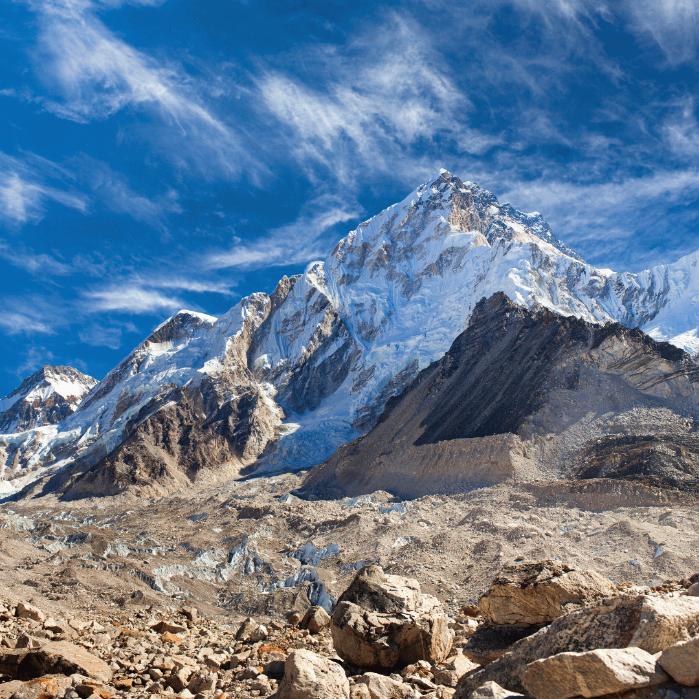
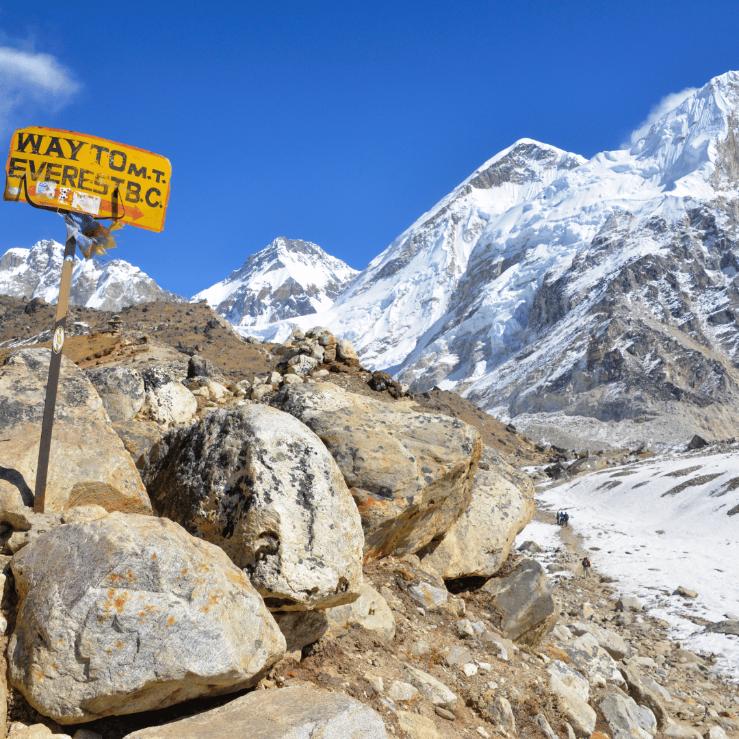
Remember to start slowly if you are new to cardio exercise as you train for Everest Base Camp Trek or have been inactive for a while. Gradually increase the intensity and duration of your workouts to avoid overexertion and injuries.
Tip: Mix up different cardio exercises to keep your workouts interesting and target different muscle groups. For example, you could alternate between running outdoors, cycling on stationary bikes, and using a stair climber at the gym.
Tip: Mix up different cardio exercises to keep your workouts interesting and target different muscle groups. For example, you could alternate between running outdoors, cycling on stationary bikes, and using a stair climber at the gym.
Adding regular cardiovascular endurance training to your fitness routine as you train for Everest Base Camp Trek will not only prepare your body for the physical demands but also improve your overall health and well-being.
1.2 Strength Conditioning
Physical preparation for the Everest Base Camp trek goes beyond cardiovascular endurance training. It is equally important to focus on building strength and endurance to tackle the challenges of long treks in high-altitude environments as you train for Everest Base Camp Trek. Strength conditioning not only helps you carry your backpack and navigate steep uphill sections but also reduces the risk of injury.
To improve strength and endurance, incorporate the following exercises into your training program:
1. Bodyweight Exercises:
Bodyweight exercises like squats, lunges, and push-ups are effective in building lower- and upper body strength. These exercises engage multiple muscle groups and simulate the movements involved in trekking.
2. Core Exercises:
A strong core is essential for maintaining balance and stability as you train for Everest Base Camp Trek. Include exercises like planks, Russian twists, and mountain climbers to strengthen your core muscles.
3. Resistance Training:
Incorporate resistance training exercises such as dumbbell or kettlebell squats, deadlifts, and overhead presses to target specific muscle groups and improve overall strength.
4. Functional Training:
Functional training involves performing exercises that mimic the movements you will encounter during the trek. This can include step-ups, box jumps, and walking lunges with weights to simulate climbing uphill or negotiating uneven terrain.
Frequency and duration of strength training sessions will depend on your fitness level and availability. Aim to train each major muscle group at least twice a week with a day of rest in between sessions. Start with lighter weights and gradually increase the intensity as your strength improves.
Before starting any physical training program, it is important to consult with a doctor or a qualified fitness professional to ensure that it is suitable for your current fitness level and any pre-existing medical conditions.
With a well-rounded training program that includes both cardio and strength training, as you train for Everest Base Camp Trek, you will be better prepared to take on the physical demands of the Everest Base Camp trek.
1.3 Hiking-Specific Exercises
Physical preparation for the Everest Base Camp trek goes beyond cardio and strength training. It is important to incorporate hiking-specific exercises into your training program to build endurance and familiarity with mountain terrain as you train for Everest Base Camp Trek. Additionally, preparing and breaking in your hiking gear, including boots and daypacks, is important for a successful trek.
Here are the key talking points for this section:
Benefits of Practice Hikes for Building Endurance and Familiarity with Mountain Terrain
- Endurance: Practice hikes are an excellent way to build endurance and stamina, specifically tailored to the demands of trekking. By gradually increasing the duration and difficulty of your hikes, you can prepare your body for the long hours of walking required during the Everest Base Camp trek.
- Terrain Familiarity: Practice hikes allow you to become familiar with different types of terrain that you may encounter during the trek as you train for Everest Base Camp Trek. This includes uphill climbs, uneven surfaces, and rocky paths. By experiencing these conditions beforehand, you can adapt your technique and stride accordingly, reducing the risk of injuries during the actual trek.
Preparing and Breaking in Hiking Gear, Including Boots and Daypacks
- Gear Selection: Choose appropriate gear that is suitable for high-altitude trekking. Invest in a sturdy pair of hiking boots that provide ankle support and have a good grip on various surfaces. Ensure that your daypack is lightweight, comfortable, and has enough space to carry essential items.
- Breaking in Boots: Before going on the Everest Base Camp trek, it is vital to break in your hiking boots properly. Start by wearing them around the house or during shorter walks to allow your feet to adjust to their fit as you train for Everest Base Camp Trek. Gradually increase the duration and difficulty of your hikes while wearing the boots to ensure they are comfortable and reduce the risk of blisters.
- Daypack Essentials: Practice hiking with your fully loaded daypack to get used to the weight and distribution of the load. This will help you find a comfortable balance and adjust the straps accordingly. Additionally, organize your gear in a way that allows easy access to essential items such as water, snacks, and extra layers.
By incorporating practice hikes and focusing on gear preparation, as you train for Everest Base Camp Trek, you can enhance your physical preparedness for the Everest Base Camp trek. These exercises not only build endurance and strength but also provide valuable experience and confidence in tackling the challenges of mountain terrain.
Remember to consult a doctor before starting any physical training program, especially if you have any pre-existing medical conditions or concerns.
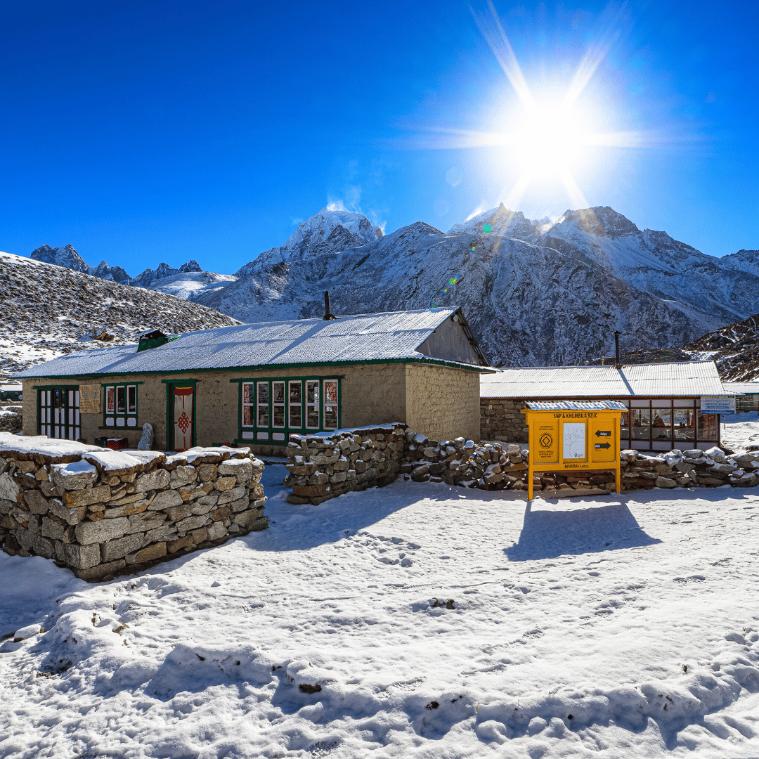
2. Essential Considerations for a Safe Ascent
Altitude sickness is a serious concern when trekking to Everest Base Camp. To ensure a safe ascent, it is very important to prepare and acclimatize properly.
Here are some essential considerations to keep in mind:
2.1 Altitude Preparation and Acclimatization Strategies
Altitude preparation should begin even before you start the trek. It is recommended to spend a few days in a city like Namche Bazaar (3,440 meters) to allow your body to adjust to higher altitudes gradually. This will help minimize the risk of altitude sickness once you start ascending further.
During the trek, it is important to follow proper acclimatization strategies. This involves taking regular rest days at certain points along the route to allow your body to adapt to the decreasing oxygen levels. These rest days are not only beneficial for acclimatization but also give you an opportunity to explore the breathtaking surroundings and interact with fellow trekkers.
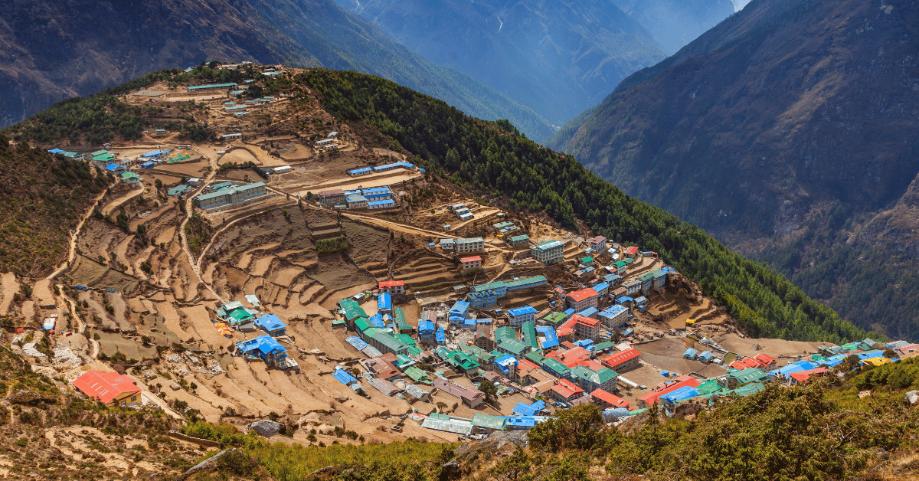
Strategies for Acclimatization During the Trek
- Gradual Ascent: One of the most effective strategies for acclimatization is a gradual ascent. It is recommended to gain no more than 300–500 meters in elevation per day once you reach an altitude of 3,000 meters. This slow pace allows your body to adjust gradually and reduces the risk of altitude sickness.
- Hydration: Staying hydrated is essential throughout the trek. Drink plenty of water and fluids to prevent dehydration, which can exacerbate altitude sickness symptoms. Avoid alcohol and caffeine as they can contribute to dehydration.
- Listen to Your Body: Pay close attention to how your body feels during the trek. If you experience symptoms such as headaches, dizziness, nausea, or loss of appetite, it may indicate altitude sickness. It’s important not to ignore these signs and communicate with your guide immediately.
Importance of Gradual Ascent and Rest Days
A gradual ascent is crucial for allowing your body to adapt to the increasing altitude. Rushing the trek or skipping rest days significantly increases the risk of altitude sickness. Take advantage of the rest days along the route, which are strategically placed to help your body adjust.
Rest days not only aid in acclimatization but also give you an opportunity to explore nearby attractions and enjoy the stunning views. Use this time to relax, engage in light activities, and immerse yourself in the unique culture of the region.
Remember, the goal is not just reaching Everest Base Camp but doing so safely and enjoying the journey along the way. By following proper altitude preparation and acclimatization strategies, you enhance your chances of a successful and memorable trek.
2.2 Nutrition and Hydration Tips for the Journey
Proper nutrition and hydration are yet again very important when trekking to high altitudes like Everest Base Camp. The combination of physical exertion, altitude, and extreme weather conditions can put a strain on your body. By fueling yourself with the right foods and staying hydrated, you can optimize your performance and reduce the risk of altitude sickness.
Importance of Proper Nutrition Before and During the Trek
Before beginning the Everest Base Camp trek, it is very essential to focus on a proper, well-balanced diet to ensure you have adequate energy reserves. This will help you cope with the physical demands of the trek and support your body’s recovery process.
Here are some key points to consider:
- Caloric Intake: Aim for a diet that provides enough calories to sustain your energy levels throughout the trek. You may require more calories than usual due to the increased physical activity and cold weather conditions.
- Macronutrients: Include a good balance of carbohydrates, proteins, and fats in your meals. Carbohydrates provide readily available energy, while proteins aid in muscle repair and recovery. Healthy fats help insulate your body in cold temperatures.
- Vitamins and Minerals: Ensure you get an adequate intake of vitamins and minerals through a variety of fruits, vegetables, whole grains, lean proteins, and nuts. These nutrients play a vital role in supporting your immune system and overall health.
Recommended Food Choices to Fuel Your Body During the Trek
During the trek, it is essential to choose foods that are easy to digest, provide sustained energy, and are lightweight to carry. Here are some food options that can help fuel your body:
- Complex Carbohydrates: Opt for foods like whole grains (oats, quinoa), brown rice, lentils, and potatoes. These foods release energy slowly, keeping you fueled for longer periods.
- Lean Proteins: Include sources like chicken, fish, tofu, beans, and legumes. Proteins help repair muscles and provide a feeling of satiety.
- Healthy Fats: Incorporate nuts, seeds, avocados, and olive oil into your meals. These fats provide concentrated energy and help with insulation in cold weather.
- Dried Fruits and Trail Mix: These are lightweight, easy to carry, and provide a quick source of energy on the trail.
- Hydration: Proper hydration is key to preventing altitude sickness. Drink plenty of water throughout the day and consider using electrolyte supplements or sports drinks to replenish lost salts.
Hydration Tips for High-Altitude Trekking
Staying properly hydrated at high altitudes is crucial for maintaining your overall health and reducing the risk of altitude sickness. Here are some tips to keep in mind:
- Drink Plenty of Water: Aim to drink at least 3–4 liters of water per day. It may be helpful to set reminders or use a hydration bladder system to ensure you stay hydrated throughout the trek.
- Avoid Alcohol and Caffeine: Both alcohol and caffeine can contribute to dehydration, so it’s best to limit your consumption during the trek.
- Monitor Urine Color: Use the color of your urine as a general guide for hydration. Clear or light yellow urine indicates proper hydration, while dark yellow urine suggests dehydration.
- Consider Electrolyte Supplements: At high altitudes, you may lose more electrolytes through sweat. Adding electrolyte supplements or consuming foods rich in sodium, potassium, and magnesium can help maintain electrolyte balance.
By paying attention to your nutrition and hydration needs before and during the Everest Base Camp trek, you can optimize your performance and minimize the risk of altitude sickness. Remember to consult with a healthcare professional or nutritionist for personalized advice based on your specific needs.
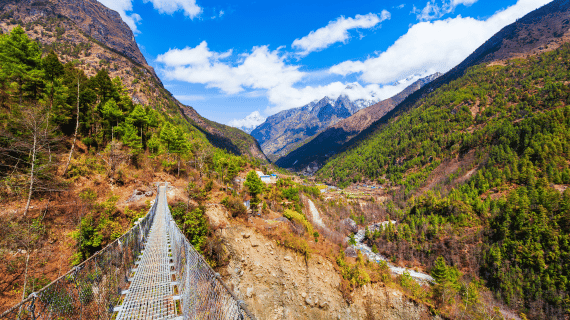
3. Taking Care of Your Body Along the Way
Benefits of Stretching Before and After the Trek
Stretching before the trek helps to warm up your muscles and prepare them for physical activity, reducing the risk of injury. After the trek, stretching aids in muscle recovery, reduces muscle soreness, and improves flexibility.
Recommended Stretching Exercises for Trekkers
- Hamstring stretch: Stand with one foot raised on a step or rock, keeping your leg straight and lean forward at the hips until you feel a gentle stretch.
- Quadriceps stretch: Standing on one leg, gently pull the other foot toward your buttocks until you feel a stretch in the front of your thigh.
- Calf stretch: Lean against a wall with one leg straight and one leg bent, pressing your heel into the ground to stretch your calf muscles.
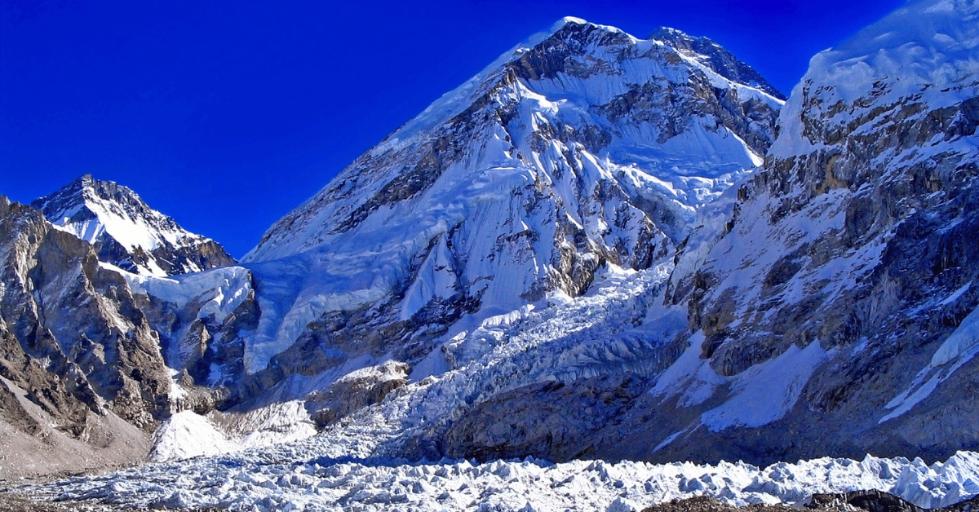
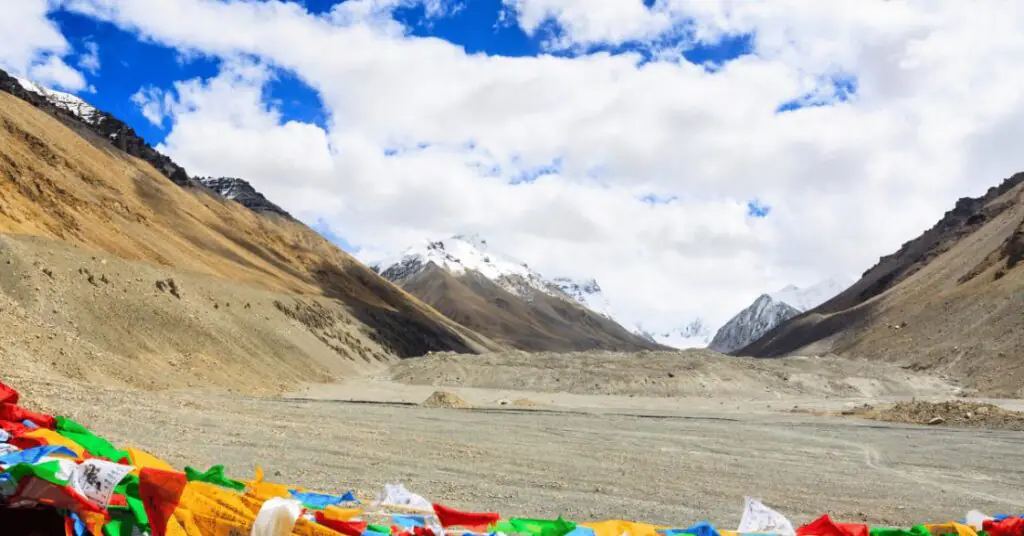
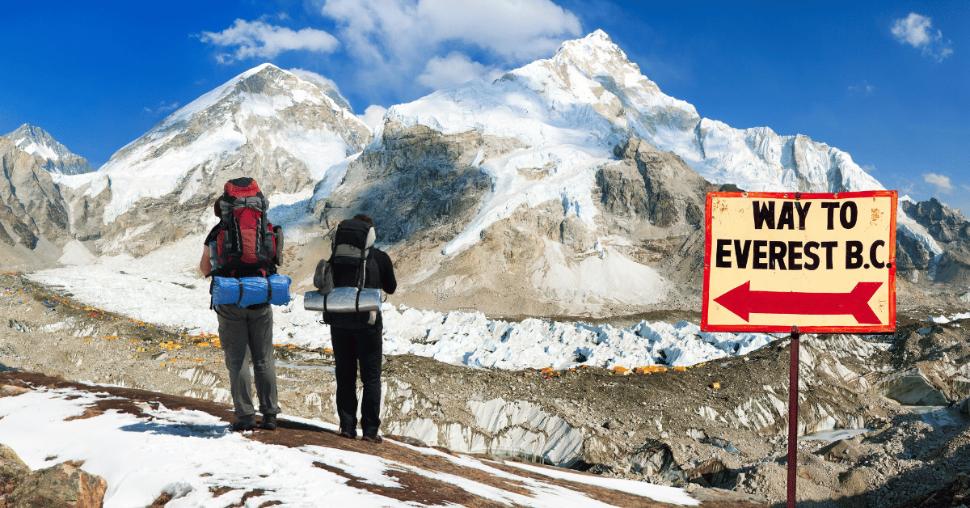
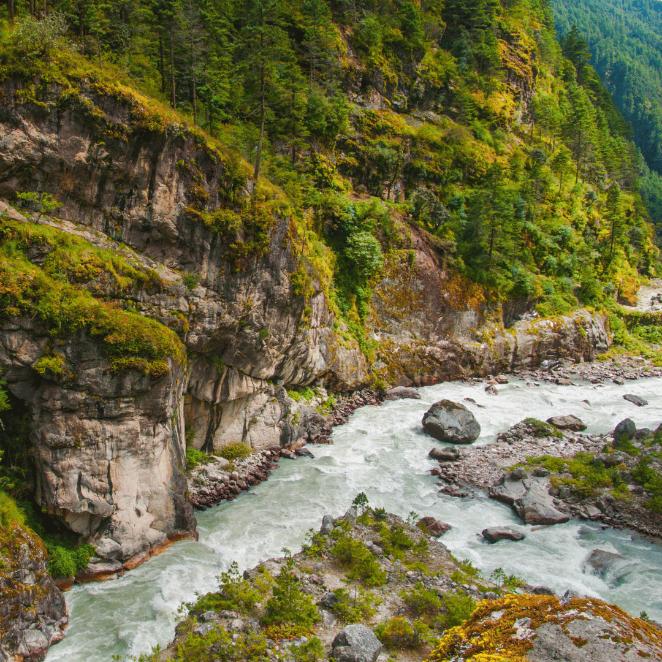
Importance of Proper Rest and Sleep for Recovery
Adequate rest is again very important for muscle recovery and overall well-being during a challenging trek. It allows your body to repair and strengthen muscles, replenish energy stores, and reduce the risk of exhaustion and fatigue.
Remember, incorporating stretching exercises into your routine and prioritizing quality rest will greatly contribute to your physical well-being throughout the Everest Base Camp trek.
4. Ensuring Safety on the Challenging Trails
Ensuring safety while trekking in the challenging terrains of the Everest Base Camp is of utmost importance. Here are some essential safety precautions, tips, and recommended gear to keep in mind during your trek:
Acquaint Yourself with Altitude Effects
Before embarking on the trek, it’s crucial to understand the potential risks and effects of altitude sickness. Familiarize yourself with symptoms such as headache, dizziness, nausea, and difficulty breathing. It’s advisable to consult with a doctor and consider taking medication to prevent altitude sickness.
Be Prepared for Emergencies
While trekking in remote areas, it’s vital to be prepared for any emergencies that may arise. Carry a well-stocked first aid kit that includes essentials like bandages, antiseptic creams, painkillers, and altitude sickness medication. Additionally, make sure you have a reliable means of communication such as a satellite phone or emergency beacon.
Stay Hydrated and Nourished
Proper hydration and nutrition are crucial for maintaining energy levels and preventing altitude sickness. Drink plenty of water throughout the day and ensure you have an adequate supply of nutritious snacks such as energy bars, nuts, and dried fruits.
Dress Appropriately
The weather in the Everest region can be unpredictable, so it’s essential to dress in layers to accommodate changing temperatures. Wear moisture-wicking clothing that keeps you dry and warm. Don’t forget to pack a waterproof jacket, gloves, and a hat to protect yourself from rain or snow.
Use Trekking Poles
Trekking poles provide stability and support while walking on uneven terrain. They help reduce strain on your knees and improve balance, especially during steep ascents or descents. Invest in sturdy and adjustable trekking poles that suit your height and walking style.
Follow Safety Guidelines
Pay attention to safety guidelines provided by your trekking guide or tour operator. These guidelines may include staying on designated trails, avoiding risky shortcuts, and adhering to group trekking schedules. Always prioritize your safety and listen to the advice of experienced guides.
Carry Proper Safety Gear
When trekking in remote areas, it’s essential to carry safety gear to ensure your well-being. Some recommended items include:
- A headlamp or flashlight
- A whistle for signaling
- A pocket knife
- A compass or GPS device
- A lightweight emergency shelter
Remember that safety should always be your top priority during the Everest Base Camp trek. By following these precautions and being prepared for emergencies, you can enjoy the breathtaking journey while minimizing risks and ensuring a safe adventure.
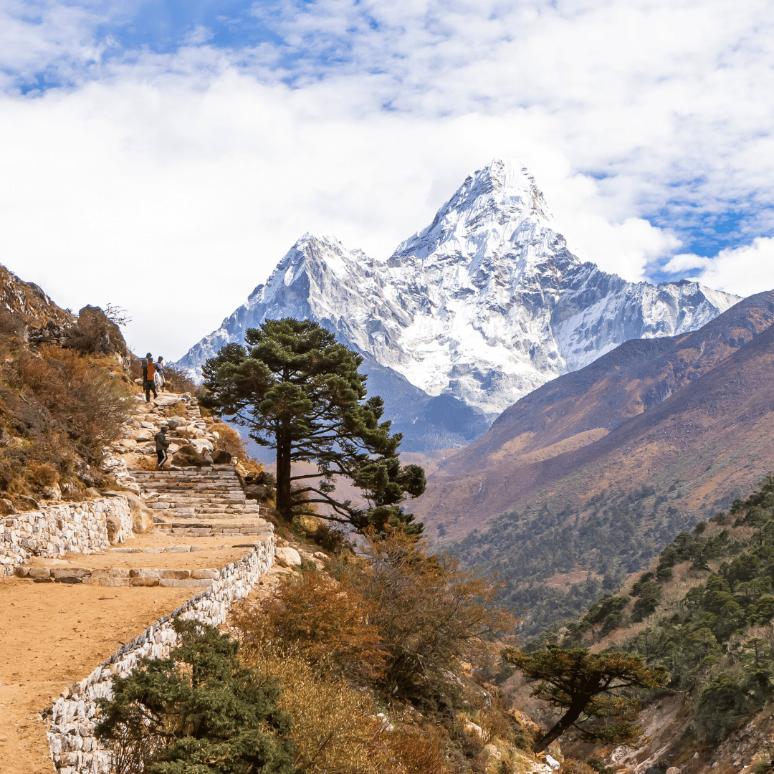
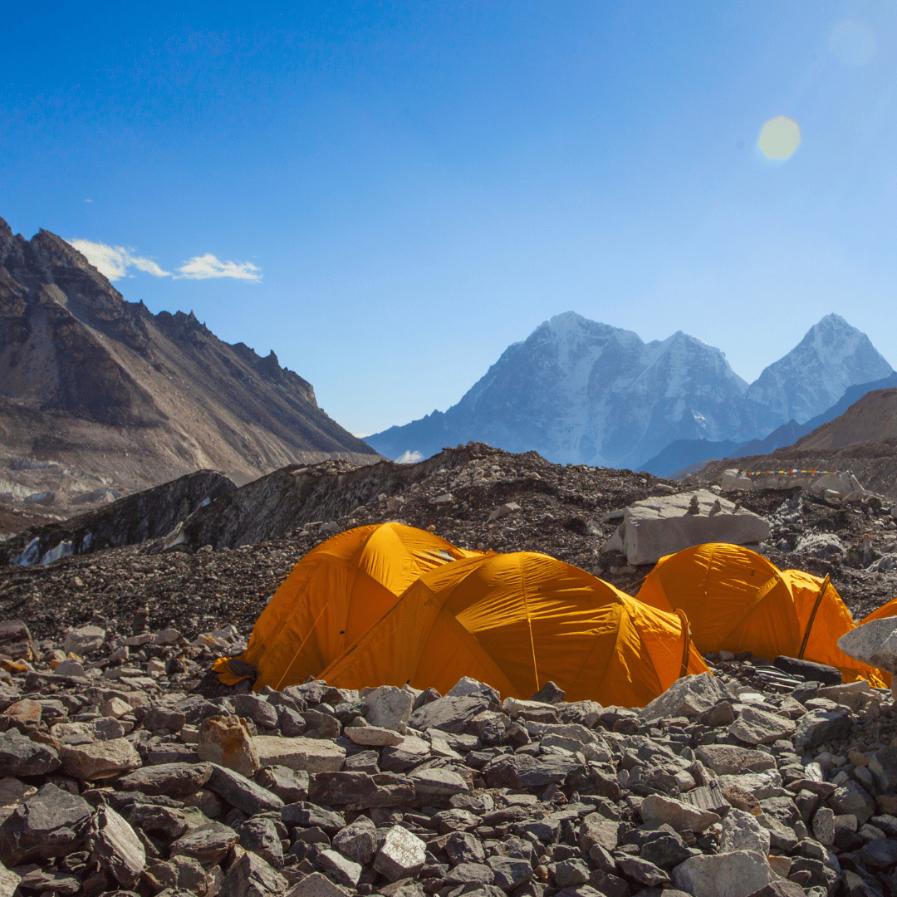
“Safety is not an option; it’s a necessity when venturing into the challenging trails of Everest Base Camp.”
Conclusion
If you’re planning to go on the Everest Base Camp trek, it is crucial to prioritize everything realted to trekking to remote places o earth as you train for Everest Base Camp Trek. Here are some key takeaways to keep in mind:
- Start Training Early: Begin your physical preparation for the Everest Base Camp trek well in advance to allow ample time for conditioning and acclimatization.
- Commit to the Program: Stay dedicated to your training regimen, focusing on both cardiovascular endurance and strength conditioning to ensure readiness for the trek.
- Rewarding Experience: Keep in mind the incredible sense of achievement and fulfillment that comes with completing the Everest Base Camp trek, making all the training efforts worthwhile.
By following these guidelines, you can set yourself up for an unforgettable and successful experience amidst the awe-inspiring landscapes of this iconic trekking destination.
More on:
Send an Enquiry
© 2024 - Himalayan Trekking and Tours (P) Ltd. All Rights Reserved.


